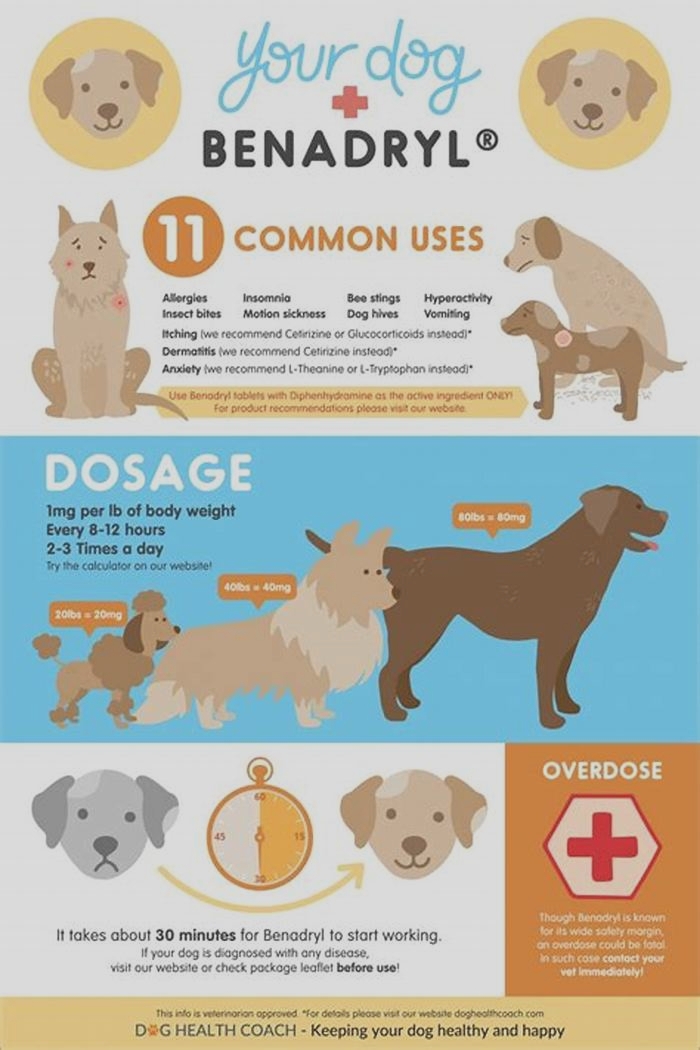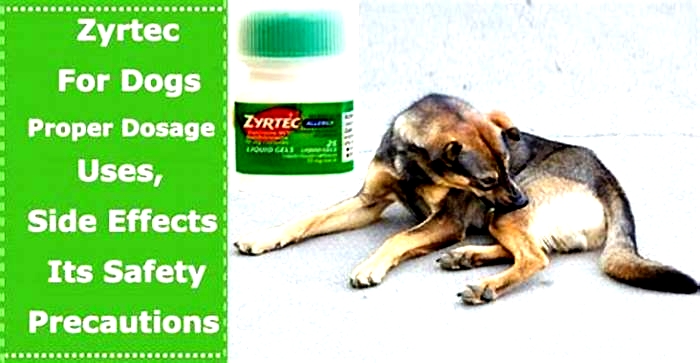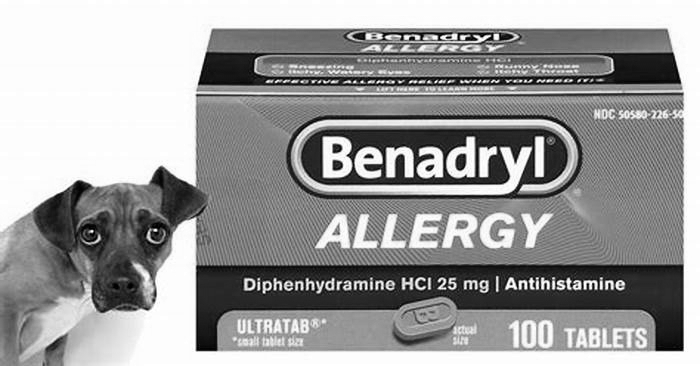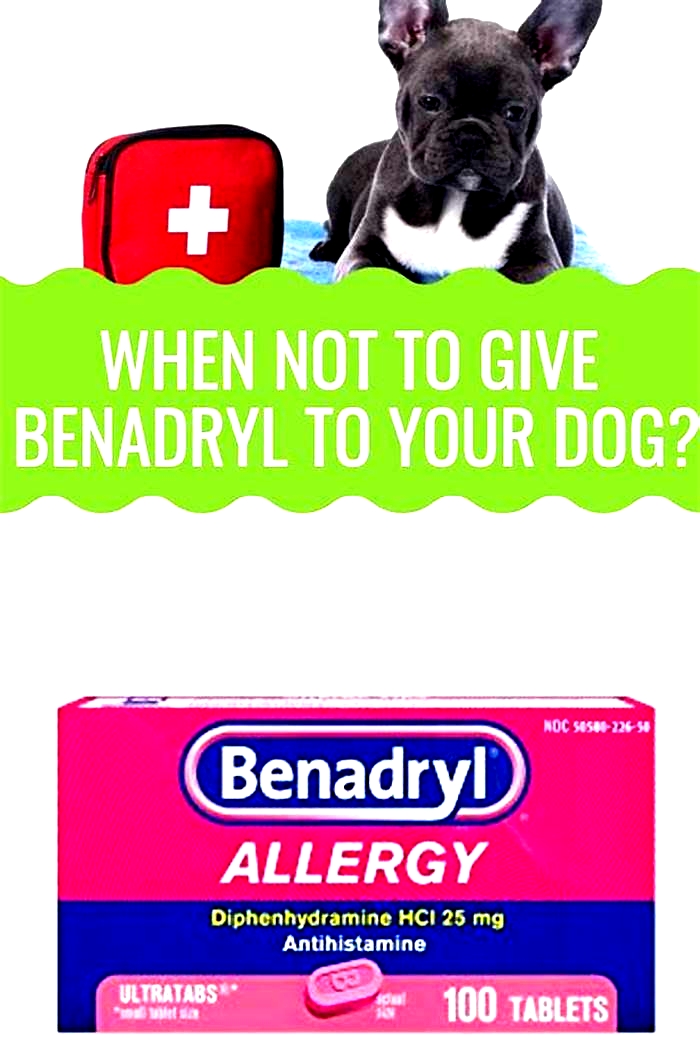How much Benadryl can I give my dog for severe itching

How Much Benadryl Can I Give My Dog? Is it Safe?
Are you wondering whether you can give your dog Benadryl to help with itching, allergies, or anxiety?
Benadryl (Diphenhydramine) is generally safe for most dogs when used correctly. However, before administering this medication to your furry friend, it's crucial to know the recommended dosage based on your dog's weight.
This article will serve as a comprehensive guide for how much Benadryl you can give your dog, how to calculate the proper dosage, and the potential side effects to keep an eye on.
Note: Please remember to consult a veterinarian before administering Benadryl or any other medication to your pet.
Is Benadryl Safe for Dogs?
As a licensed veterinarian, I would say Benadryl is safe for dogs when given at the appropriate dosage. It is an antihistamine that can help alleviate symptoms of allergies, such as itching, swelling, and sneezing.
However, dogs with certain medical conditions may not be good candidates for Benadryl and should only be given the medicine under the guidance of a veterinarian.
Types of Benadryl
Diphenhydraminecomes in various forms, including tablets, capsules, and liquid. Each has its own level of strength in milligrams (mg).
Benadryl is available in:
Tablets- small round tables that come in 25mg or 50mg strength.
Capsules- small capsules that also come in 25mg or 50mg strength.
Liquid- similar to other liquid medications and following a mg/mL dosing, these typically come in a strength of 12.5mg/5ml (2.5mg/ml). If you choose the liquid form, make sure that it does not contain xylitol or other active ingredients.
How Much Benadryl is Recommended for Dogs?
The general guideline for Benadryl dosage is quite straightforward:1 mg of Benadryl per pound of body weight, administered every 8 to 12 hours. This frequency helps maintain the medication's effectiveness throughout the day.
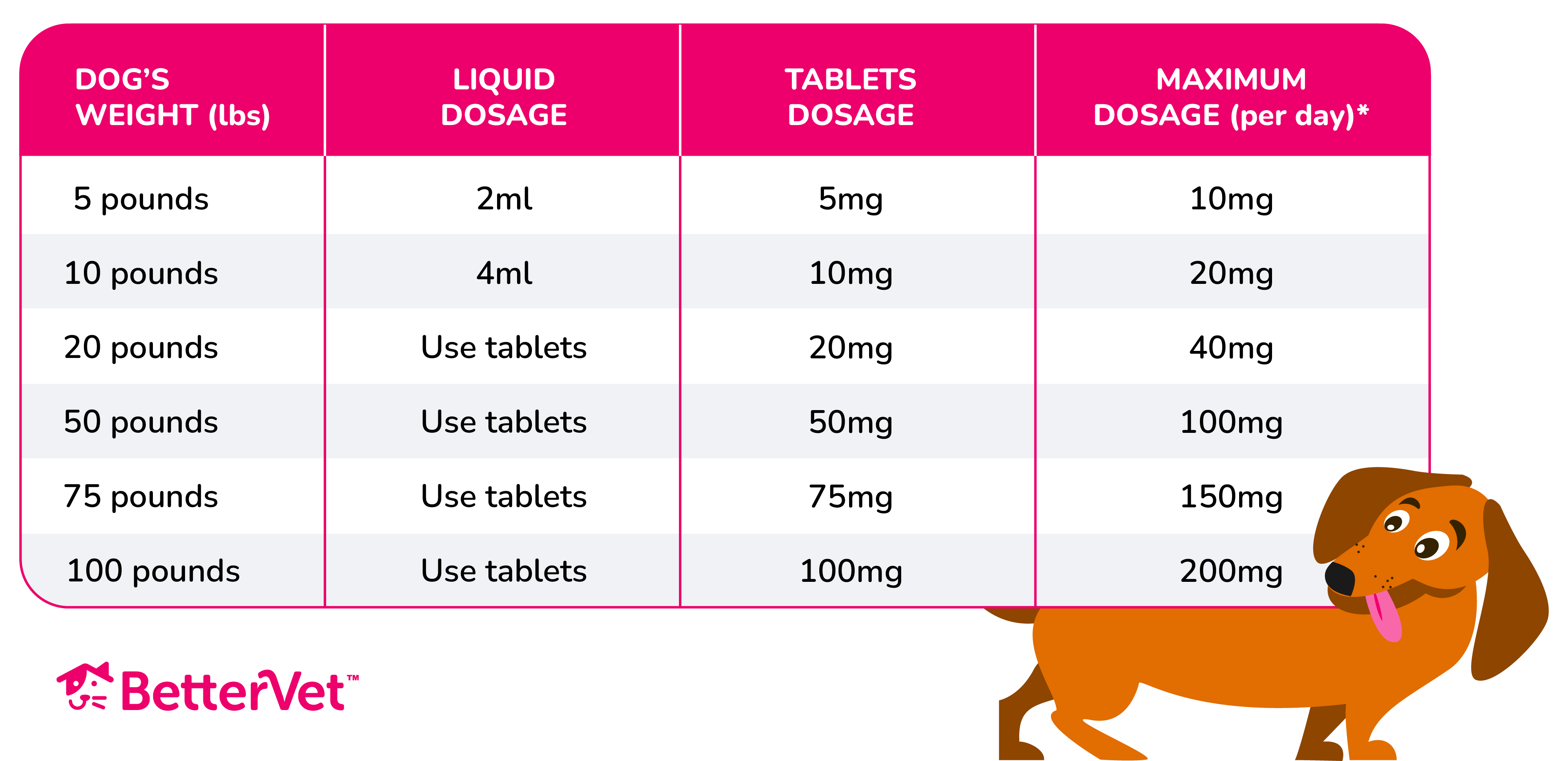
Liquid Benadryl is typically recommended for dogs weighing less than 10 pounds, as this can make it easier to achieve an accurate and appropriate dose.
For dogs weighing more than 10 pounds, most veterinarians recommend tablets, which come in 25-50 mg sizes. Achieving the appropriate dose requires breaking the tablets into quarters as closely as possible. However, it is important to note that the exact dosing will depend on your dog's individual needs and medical history.
Liquid Benadryl Dosage Formula for Dogs
If you need to calculate the appropriate liquid dosage of Benadryl for your dog, you can use a simple formula. First, divide your dog's weight in pounds by 2.5. The result will give you the appropriate dose in milliliters (ml).
For example, if your dog weighs 10 pounds, you would calculate its dosage as follows: 10lbs 2.5 = 4ml.
Once you have determined the appropriate dosage, you can measure it using a syringe or a measuring spoon. It is important to note that one teaspoon is equal to 5 ml, so if your dog requires a dose of more than one teaspoon, you will need to use multiple teaspoons to measure the appropriate amount.
Dog Benadryl Dosage by Weight Chart
Below is a table illustrating how much Benadryl you can give your dog depending on how much it weighs.
Dog Weight (lbs) | Liquid Dosage (mL)* | Tablet Dosage (mg) | Total Daily Dosage (mg) |
5 | 2 mL | 5 mg | 10 mg |
10 | 4 mL | 10 mg | 20 mg |
15 | 6 mL | 15 mg | 30 mg |
20 | 8 mL | 20 mg | 40 mg |
25 | 10 mL | 25 mg | 50 mg |
30 | 12 mL | 30 mg | 60 mg |
35 | 14 mL | 35 mg | 70 mg |
40 | 16 mL | 40 mg | 80 mg |
45 | 18 mL | 45 mg | 90 mg |
50 | 20 mL | 50 mg | 100 mg |
55 | 22 mL | 55 mg | 110 mg |
60 | 24 mL | 60 mg | 120 mg |
65 | 26 mL | 65 mg | 130 mg |
70 | 28 mL | 70 mg | 140 mg |
75 | 30 mL | 75 mg | 150 mg |
*Assuming a liquid concentration of 12.5mg/5mL, which is a common formulation.
Can You Use Benadryl to Treat Allergies in Dogs?
Yes, Benadryl is effective for treating a range of allergy symptoms in dogs. Whether it'sseasonal allergiesor reactions to an environmental irritant, Benadryl can offer quick relief, making it a go-to in my practice for immediate symptom management.
Here are the allergy symptoms Benadryl can help treat in dogs:
Sneezing: Reduces sneezing caused by environmental allergens.
Reverse Sneezing: Can alleviate episodes of reverse sneezing, which are often benign but can be triggered by irritants or allergens.
Red Eyes: Helps soothe red, irritated eyes resulting from allergic reactions.
Watery Eyes: Reduces excessive tear production associated with allergies.
Itching: Eases skin itchiness due to allergies, helping to prevent scratching that can lead to skin infections.
Hives: Reduces the occurrence of hives secondary to an allergic reaction.
Skin Allergies: Offers relief from discomfort caused by allergic dermatitis and other skin allergies.
Seasonal Allergies: Mitigates symptoms associated with seasonal allergies, such as pollen.
If you are unsure if Benadryl is the right medication to treat your dogs allergy-related symptoms,schedule a virtual vet visitwith one of our online veterinarians.
What Else Can You Use Benadryl for in Dogs?
In addition to its use in managing allergy symptoms, Benadryl can have a range of other applications when used in dogs.
Some use cases of Benadryl in dogs may include:
It is also worth noting that while Benadryl can be an effective tool in managing specific health issues in dogs, it may not be appropriate for every situation, and other treatments or interventions may be necessary.
Common Side Effects of Benadryl in Dogs
When administering Benadryl, themost frequently observed side effect is drowsiness. This is due to thesedative properties of diphenhydramine, the active ingredient in Benadryl.
While this can be beneficial in calming allergic reactions, it's important to monitor your pet to ensure they are comfortably resting and not overly sedated.
When giving your dog Benadryl, watch for these side effects:
Drowsiness: The most common effect, due to Benadryl's sedating properties.
Dry Mouth: Increased thirst and frequent water seeking are signs to look out for.
Nausea and Vomiting: Less common, but some dogs may become nauseous.
Increased Heart Rate: A serious side effect that requires immediate veterinary attention.
Rapid Breathing: Another critical sign indicating the medication may not be well-tolerated.
Urinary Retention: Difficulty urinating, a less common but important side effect to monitor.
Can a Dog Overdose on Benadryl?
Yes, a dog can indeed overdose on Benadryl. Overdosing can lead to severe health complications. It's crucial to adhere strictly to the recommended dosage guidelines and consult with your veterinarian to prevent such a situation.
Here are thesigns of a Benadryl overdose in dogsthat you should be aware of:
Rapid Heartbeat: An increase in heart rate beyond the normal range.
Dilated Pupils: Noticeable enlargement of the pupils.
Agitation or Hyperactivity: Uncharacteristic restlessness or increased activity.
Constipation: A noticeable decrease in or absence of bowel movements.
Seizures:Convulsions or severe twitching, which are medical emergencies.
Dry Mouth: Significantly reduced saliva production or extreme thirst.
Urinary Retention: Difficulty urinating or an inability to urinate.
If you observe any of these signs in your dog after administering Benadryl, it's imperative toseek emergency veterinary care immediately.
An overdose requires prompt medical attention to mitigate the risks and ensure your pet's safety and well-being.
Conclusion
In summary, Benadryl (diphenhydramine) can be a helpful and safe medication for treating mild itching, to be used as a mild sedative, and to prevent acute allergic reactions in dogs.
Common side effects of Benadryl in dogs include sleepiness and gastrointestinal symptoms but most dogs will tolerate the medication well.
If you have concerns about giving Benadryl to your dog or if your dog experiences any adverse effects, consult with your veterinarian.
Frequently Asked Questions
How long does Benadryl last in dogs?
Benadryl typically lasts 6-8 hours in dogs. However, the actual duration of effect may vary depending on factors such as your dog's weight, age, and health status.
How long does it take for Benadryl to work on dogs?
Benadryl typically takes effect within 30 minutes to an hour of administration. However, this time may vary depending on your dog's weight, age, and health status.
Can dogs be allergic to Benadryl?
Yes, dogs can be allergic to Benadryl or any other medication. While it is generally well-tolerated, some dogs may experience allergic reactions to Benadryl, such as itching, hives, swelling, or difficulty breathing.
Can I give my dog Benadryl?
Benadryl is commonly used in dogs with mild-to-moderate allergies. It can help relieve symptoms like itching, sneezing, and watery eyes. However, it's important to talk to your vet before giving your dog Benadryl, as it can interact with other medications or health conditions.
The recommended dosage to administer the medication is typically 0.9 to 1.8 milligrams per pound of your dog's body weight, given 1-2 times per day. Always use the appropriate formulation and dosage for your pet's size and weight, and follow your vet's instructions carefully.
Can I give my dog Benadryl for itching?
Yes, you can give your dog Benadryl for itching. Benadryl contains an antihistamine called diphenhydramine, which can help alleviate itching in dogs.
Can I give my dog human Benadryl?
Yes. Benadryl is an over-the-counter medication that is labeled for humans but is generally considered safe for dogs in the appropriate dosage. Always consult with your veterinarian before giving your dog any medication.
Can I give my dog Benadryl every day?
It is generally safe to give your dog Benadryl daily for short periods, as directed by your veterinarian. However, if you plan to give your dog Benadryl for longer than a few days, you should consult your vet to discuss potential risks or concerns.
Can I use Benadryl to sedate my dog for travel?
While Benadryl may have a mild sedative effect on some dogs, veterinarians typically do not recommend it as a primary sedation method for travel. Instead, discussing options for safe and effective sedation with your veterinarian would be best.
How much Benadryl to give a 50 LB dog?
It is generally recommended to provide two 25-milligram tablets, but it's crucial to consult with a veterinarian beforehand to ensure that Benadryl is suitable for your dog's specific requirements and to verify the correct dosage based on your dog's weight and other health considerations.
Read more: 10 Tips for Traveling with Your Pet
Sources and References
Worth, A.C., Wismer, T.A. and Dorman, D.C., 2016. Diphenhydramine exposure in dogs: 621 cases (20082013). Journal of the American Veterinary Medical Association, 249(1), pp.77-82.
Loew, E.R., MacMILLAN, R.O.B.E.R.T. and Kaiser, M.E., 1946. The anti-histamine properties of Benadryl, -dimethylaminoethyl benzhydryl ether hydrochloride. Journal of Pharmacology and Experimental Therapeutics, 86(3), pp.229-238.
Cortinovis, C., Pizzo, F. and Caloni, F., 2015. Poisoning of dogs and cats by drugs intended for human use. The Veterinary Journal, 203(1), pp.52-58.
Can I Give My Dog Benadryl? And if So, How Much?
NOTE: Its always best to contact your veterinarian for guidance before administering any medication to your pet, including Benadryl.
Benadryl, also known by its generic name,diphenhydramine, is one of the few over-the-counter drugs designed for people that veterinarians may have pet parents administer at home.
You might be looking at using Benadryl for dogs to keep your pup calm, or maybe your dog wasstung by an insectand is having a mild allergic reaction. But while Benadryl is generally well tolerated by dogs and has a wide safety margin, its not necessarily the answer to your dogs issue.
For some dogs, giving Benadryl to calm them may have the opposite effect and make themmore anxious. In addition, Benadryl shouldnotbe given to animals with certain health conditions or pups taking certain medications.
So, when is Benadryl for dogs effective and safe, and when does your dog need a different treatment? Here are a few things you should keep in mind before giving your dog Benadryl.
What Is Benadryl?
Benadryl is a first-generation antihistamine that prevents H-1 receptors in the body from reacting to histamine. It can also ease nausea and vomiting by inhibiting the chemoreceptor trigger zone (vomiting center) in the brain and reducing the way that the vestibular apparatus (the balance center in the ear) responds to motion.
Veterinarians most commonly recommend that pet parents give their dogs Benadryl to prevent or treat mild allergic reactions and to reduce nausea and vomiting associated with motion sickness or vestibular disease.
Can Benadryl Be Used for Dog Allergies?
Taken orally, Benadryl for dogs can help ease mild allergic symptoms to common triggers such as pollen, mold, and house mites, particularly if its used in combination with other allergy treatments. Benadryl can also be used for mild allergic reactions to insect bites or stings. Oral or injectable Benadryl can be used as a pre-treatment for mild allergic vaccine reactions.
But if your pet is having anacuteallergic reaction with facial swelling or difficulty breathing, take them straight to the vet. Severe allergic reactions can be life-threatening. Dogs often require aggressive supportive care and treatment with steroids and epinephrine in addition to Benadryl.
Can Dogs Take Benadryl for Anxiety?
You might have heard thatBenadryl can be given to dogs to help with travel anxietyor dogs that are scared offireworksandthunderstorms, but it really isnt very effective. Benadryl may make some dogs a little sleepy and less responsive, but it doesnt do anything for their underlying anxiety.
Benadryl does has someefficacyin the prevention of motion sickness in dogs. So, if your dog is anxious because theyre nauseous in the car, it could help. Some dogs and cats actually have the opposite reaction to Benadryl, causing hyperactivity instead of sedation.
If your dog has anxiety, talk with your veterinarian to determine a course of treatment. It might involve making changes to your dogs environment, behavioral training, prescription medications, or tools such asanxiety vests and pheromones.
Is Benadryl Safe for Dogs?
By and large, Benadryl is very well-tolerated in dogs, with few side effectsand a low risk of overdose when used correctly.
But the reason why you still need to check with your veterinarian is because there are safety risks if your dog has certain health conditions or takes certain medications.
Some instances in which Benadryl should not be used (or should be used with caution) include:
Cardiac conditions (cardiovascular disease)
Some lung conditions
Liver disease
Seizure disorders
Difficulties urinating
Glaucoma
Pregnancy
In conjunction with certain medications, including monoamine oxidase inhibitors, and come drugs used to treat fungal infections
Side Effects of Benadryl for Dogs
At normal doses, the most common side effects of Benadryl exhibited by dogs include drowsiness and being unsteady on their feet. But if a dog receives too much Benadryl, they might exhibit:
Call your veterinarian for advice if your dog experiences any worrisome symptoms after taking Benadryl.
Whats the Benadryl Dosage for Dogs?
With any medication, the safest way to know the proper dose for your dog is to ask your veterinarian. In addition, many formulations are combined with other potentially dangerous medications, such as Tylenol. Make sure your Benadryl tablets contain only diphenhydramine.
According to the Merck Veterinary Manual, the standard dose for Benadryl is 24 milligrams per kilogram of body weight, or 0.91.8 milligrams (mg) of Benadryl per pound.
Therefore, a simple and practical dose is 1 mg of Benadryl per pound of your dogs weight, given two to three times a day. For example, a 10-pound dog might receive a 10 mg dose in the morning, afternoon, and evening.
Your Dogs Weight | Recommended Dosage | Maximum Dosage |
5 pounds | 5 mg | 10 mg |
10 pounds | 10 mg | 20 mg |
20 pounds | 20 mg | 40 mg |
30 pounds | 30 mg | 60 mg |
40 | 40 mg | 80 mg |
50 | 50 mg | 100 mg |
75 | 75 mg | 150 mg |
100 pounds | 100 mg | 200 mg |
There are also different forms of Benadryl, including tablets, capsules, liquids, and childrens chewable tablets, all of which can make it difficult to figure out the amount to give your dog. When in doubt, ask your vet!
Benadryl Tablets and Capsules
Benadryl tablets are available and contain either 25 mg or 50 mg of diphenhydramine, which would be the appropriate size for a 25-pound or 50-pound dog, respectively.
Give more than one tablet or capsule at a time to add up to the appropriate dose for larger dogs. You can split 25 mg tablets in half to fine-tune your dogs dose. For example, one 50 mg tablet and half of a 25 mg tablet would be appropriate for a dog weighing 60 pounds.
Childrens Chewable or Liquid Benadryl for Dogs
Childrens chewable or liquid Benadryl are good options for tiny dogs. A full chewable childrens tablet contains only 12.5 mg of diphenhydramine and can be cut in half for dogs that weigh less than 10 pounds.
Childrens liquid Benadryl contains only 2.5 mg/ml and may be easier to give to small dogs that resist taking pills.
How Often Can You Give Your Dog Benadryl?
Dogs can be given Benadryl every eight to 12 hours (two to three times a day).
Are there Alternatives to Giving a Dog Benadryl?
Diphenhydramine has been around for a long time, and continued research has led to the development of treatments that may be more effective than Benadryl.
Using several different types of treatment at the same time (medicated shampoos, supplements, and prescription medications, for example) is the best way to manage a dogs allergies.
Prescription anti-anxiety medications for dogs combined with a behavioral modification program will do a much better job than Benadryl when it comes to helping dogs with anxiety.
Talk to your veterinarian if you have any questions about giving your dog Benadryl or other ways to keep them healthy and happy.
Featured Image: iStock.com/ILIA KALINKIN
WRITTEN BY
Jennifer Coates, DVMVeterinarian
Dr. Jennifer Coates is an accomplished veterinarian, writer, editor, and consultant with years of experience in the fields of veterinary...


